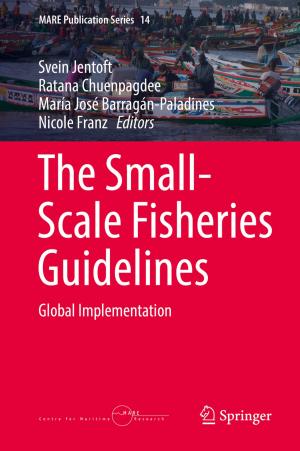Green Adsorbents for Pollutant Removal
Innovative materials
Nonfiction, Science & Nature, Technology, Environmental, Science, Biological Sciences, Environmental Science, Nature| Author: | ISBN: | 9783319921624 | |
| Publisher: | Springer International Publishing | Publication: | July 31, 2018 |
| Imprint: | Springer | Language: | English |
| Author: | |
| ISBN: | 9783319921624 |
| Publisher: | Springer International Publishing |
| Publication: | July 31, 2018 |
| Imprint: | Springer |
| Language: | English |
This is the second volume on adsorption using green adsorbents and is written by international contributors who are the leading experts in the adsorption field. Together with the first volume they show a typical selection of green materials used in wastewater treatment, with emphasis on industrial effluents. This second volume focuses on innovative materials.
It presents hemp-based materials for metal removal, and the use of leaves for metal removal. It describes the biosorption of metals and metalloids on various materials and discusses the recent advances in cellulose-based adsorbents used in environmental purposes. Furthermore, activated carbons from food wastes, aerogels and bones, and municipal solid waste biochar as efficient materials for pollutant removal, respectively are reviewed as well as biosorption of dyes onto microbial biosorbents and the use of mushroom biomass to remove pollutants are looked at. The volume also includes detailed review of green adsorbents for removal of antibiotics, pesticides and endocrine disruptors and the use of pillared interlayered clays as innovative materials for pollutant removal. Finally, the use of green adsorbents for radioactive pollutant removal from natural water is discussed.
The audience for this book includes students, environmentalists, engineers, water scientists, civil and industrial personnel who wish to specialize in adsorption technology. Academically, this book will be of use to students in chemical and environmental engineering who wish to learn about adsorption and its fundamentals. It has also been compiled for practicing engineers who wish to know about recent developments on adsorbent materials in order to promote further research toward improving and developing newer adsorbents and processes for the efficient removal of pollutants from industrial effluents. It is hoped that the book will serve as a readable and useful presentation not only for undergraduate and postgraduate students but also for the water scientists and engineers and as a convenient reference handbook in the form of numerous recent examples and appended information.
This is the second volume on adsorption using green adsorbents and is written by international contributors who are the leading experts in the adsorption field. Together with the first volume they show a typical selection of green materials used in wastewater treatment, with emphasis on industrial effluents. This second volume focuses on innovative materials.
It presents hemp-based materials for metal removal, and the use of leaves for metal removal. It describes the biosorption of metals and metalloids on various materials and discusses the recent advances in cellulose-based adsorbents used in environmental purposes. Furthermore, activated carbons from food wastes, aerogels and bones, and municipal solid waste biochar as efficient materials for pollutant removal, respectively are reviewed as well as biosorption of dyes onto microbial biosorbents and the use of mushroom biomass to remove pollutants are looked at. The volume also includes detailed review of green adsorbents for removal of antibiotics, pesticides and endocrine disruptors and the use of pillared interlayered clays as innovative materials for pollutant removal. Finally, the use of green adsorbents for radioactive pollutant removal from natural water is discussed.
The audience for this book includes students, environmentalists, engineers, water scientists, civil and industrial personnel who wish to specialize in adsorption technology. Academically, this book will be of use to students in chemical and environmental engineering who wish to learn about adsorption and its fundamentals. It has also been compiled for practicing engineers who wish to know about recent developments on adsorbent materials in order to promote further research toward improving and developing newer adsorbents and processes for the efficient removal of pollutants from industrial effluents. It is hoped that the book will serve as a readable and useful presentation not only for undergraduate and postgraduate students but also for the water scientists and engineers and as a convenient reference handbook in the form of numerous recent examples and appended information.















